The Montessori Pink Tower is a sensorial material made of ten pink cubes that increase in size from one to ten centimeters. It is used to help children see and feel differences in dimension in a clear and concrete way. By focusing on a single quality, size, the child is free to explore, observe, and repeat without distraction. This creates an environment where learning is guided by the senses and reinforced by hands-on discovery.
This clarity of purpose sets the Montessori Pink Tower apart from ordinary stacking toys. Instead of offering entertainment, it strengthens visual discrimination, coordination, and concentration through structured practice. Children also gain early language and math readiness skills as they compare and sequence the cubes.
In this article, you’ll learn about the Montessori pink tower’s role in early education, why it’s such a valuable tool, and the kinds of activities that can deepen your child’s engagement with it.
What Is the Purpose of the Pink Tower in Montessori?
The purpose of the Montessori Pink Tower is to help children understand dimension, order, and size relationships through direct hands-on experience. By working with ten cubes that increase gradually in size, children strengthen their senses, refine physical control, and build early thinking skills that prepare them for mathematics and structured learning.

Building Visual Discrimination of Size and Dimension
One purpose of the Montessori Pink Tower is to help children see and understand differences in size. The cubes increase gradually in all three dimensions, allowing children to compare and classify objects with clarity. This work develops the ability to recognize length, width, and height, which is a key goal of the Montessori sensorial curriculum.
Strengthening Concentration
The Montessori Pink Tower encourages deep focus because children must select each cube carefully and place it with precision. As they repeat the activity, they begin to work more slowly and attentively. This gradual strengthening of concentration prepares children for later tasks that require patience and sustained mental effort.
Developing Coordination and Controlled Movement
Lifting, carrying, and placing the cubes refine a child’s motor skills. The material invites smooth and purposeful movement, helping children build better hand strength, spatial awareness, and physical control. These skills support later activities such as writing, drawing, and practical life work.
Indirect Preparation for Mathematics
The Montessori Pink Tower provides indirect preparation for later math learning. Through sequencing, comparison, and self-correction, the child begins to understand gradation and order. These experiences build the foundations for concepts such as measurement, quantity relationships, and base ten structure long before formal math lessons begin.
What is Indirect Preparation in Montessori?
Indirect preparation refers to how early sensorial experiences help children feel familiar and confident when they encounter similar materials in later academic work. Montessori noted in The Absorbent Mind that children pay closer attention to ideas they have already absorbed in earlier stages. This familiarity creates what she called “old friends,” materials that naturally support future learning. Although modern research uses different terms, the core idea remains clear: meaningful early experiences quietly prepare the mind for more complex concepts later on.
Promotion of Independent Problem Solving
Another key purpose of the Montessori Pink Tower is to encourage self-correction. The material is designed without built-in guides, so children must rely on their senses and reasoning to discover errors and make adjustments. This nurtures independence, confidence, and the ability to engage in reflective thinking, all core outcomes of the Montessori method.
History Talk: How the Montessori Pink Tower Was Born?
The Montessori Pink Tower has its roots in the early development of the sensorial curriculum created by Maria Montessori in the early twentieth century. As Montessori observed young children in the first Children’s House in Rome, she noticed their strong interest in activities that involved sorting, comparing, and manipulating objects of different sizes. These observations guided her to design materials that isolate a single quality so children could refine their senses with clarity and purpose.
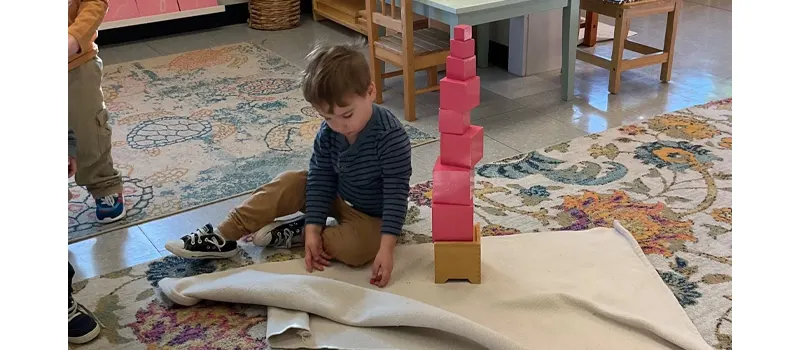
The Montessori Pink Tower emerged from this work as one of the first sensorial materials. Montessori wanted children to understand dimension in a concrete and orderly way, so she created a set of ten wooden cubes that increase progressively in size. The ten pink cubes were intentionally crafted to isolate one quality—size—so that children could focus deeply on distinguishing dimension without distractions from other variables like color or texture.
As Montessori continued refining her method, the Pink Tower became a foundational material used to illustrate her belief that children learn through active, meaningful interaction with their environment. Over time, the cubes came to symbolize the precision, simplicity, and intentional design that define Montessori education. Even today, more than a century later, the Montessori Pink Tower remains an essential tool for developing concentration, coordination, and early mathematical awareness in Montessori classrooms across cultures.
Why Is the Pink Tower Pink?
The Montessori Pink Tower is painted a uniform shade of pink to isolate the concept of size. In the Montessori design, materials are meant to highlight one quality at a time. By removing variations in color, texture, or pattern, the material ensures the child focuses solely on dimension.
Pink was chosen because it is soft, non-distracting, and visually distinct from the natural wood tones common in Montessori classrooms. The color is noticeable enough to draw interest, yet neutral enough not to compete with the material’s purpose.
Montessori Pink Tower
The Montessori Pink Tower invites children to explore size, order and concentration through hands on play. Each wooden cube is designed to help young learners compare, build and refine their sense of dimension.
This classic material strengthens visual discrimination and prepares children for future math concepts. Its soft color and smooth finish add a warm and elegant touch to your classroom environment.
Explore More Montessori MaterialsWhat Age Is the Pink Tower Introduced?
In Montessori classrooms, the Pink Tower is generally introduced between two and a half and three years old. This is the stage when children begin to show stronger hand control, longer periods of concentration, and a natural interest in comparing and manipulating objects of different sizes. However, the exact timing depends on the child’s developmental readiness rather than age alone. Teachers observe whether the child can carry objects carefully, focus on a short demonstration, and complete simple practical life activities before introducing the Montessori Pink Tower. When these signs appear, the child is ready to explore dimension through sensorial work.
How to Introduce the Montessori Pink Tower in the Classroom?
Introducing the Montessori pink tower in the classroom should be a calm, intentional experience that respects the child’s natural curiosity and developmental readiness. Typically presented to children between the ages of two and a half to three years old, the activity focuses on sensory exploration, concentration, and precision.
Step 1: Prepare the Space
Choose a quiet, uncluttered work area and place a clean mat or empty table surface for the presentation. Make sure all ten cubes are clean, complete, and arranged correctly on the shelf. The child should see a well-prepared environment that communicates order. Avoid presenting in a busy part of the classroom or leaving unrelated materials nearby, as these distract from the focus of the lesson.
Step 2: Invite the Child
Approach the child calmly and offer a simple invitation such as “I would like to show you something.” Speak softly and walk slowly toward the shelf so the child naturally follows your movements. Keep your language minimal to avoid shifting the child’s attention toward verbal instruction instead of the demonstration. Avoid creating excitement or pressure; your tone should remain peaceful and neutral.
Step 3: Carry the Cubes One by One
Begin by picking up the smallest cube with both hands and carrying it carefully to the work area. Repeat with each cube, maintaining a consistent pace and steady movements. These models respect the material and show the child how to handle the cubes with care. Avoid carrying multiple cubes at once or moving too quickly, as rushed movements reduce clarity and precision.
Step 4: Arrange the Cubes at Random
Place all ten cubes on the mat in a loose, mixed arrangement. This prepares the child to compare sizes visually and search intentionally for the next cube. Keeping the cubes within the child’s field of view supports focus. Avoid lining them up in order or naming size differences, since the lesson is meant to be purely sensorial and free of language.
Step 5: Build the Tower Silently
Begin with the largest cube and stack each cube from largest to smallest. Work slowly, align each cube carefully, and maintain silence throughout the demonstration. Your silence helps the child concentrate fully on the visual contrast of dimension. Avoid giving commentary, correcting errors during demonstration, or drawing attention to yourself instead of the material.
Step 6: Pause and Observe the Completed Tower
When the tower is finished, step back slightly and allow a moment of quiet observation. This pause supports the child’s internal processing and appreciation of order. Avoid touching the tower again or explaining its appearance; the child should absorb the visual impression independently.

Step 7: Invite the Child to Try
Gently take down the tower, mix the cubes again, and offer the child a turn. Step aside far enough to protect concentration but remain near enough to observe respectfully. Avoid guiding the child’s hands, pointing out errors, or providing hints. The child learns through personal exploration, not correction.
Step 8: Return the Material to the Shelf
When the child finishes working, demonstrate how to carry each cube back to the shelf one by one and arrange them neatly in the correct order. This shows the child how to complete the full cycle of work. Avoid rushing through the cleanup, as returning the material is an important part of building independence and responsibility.
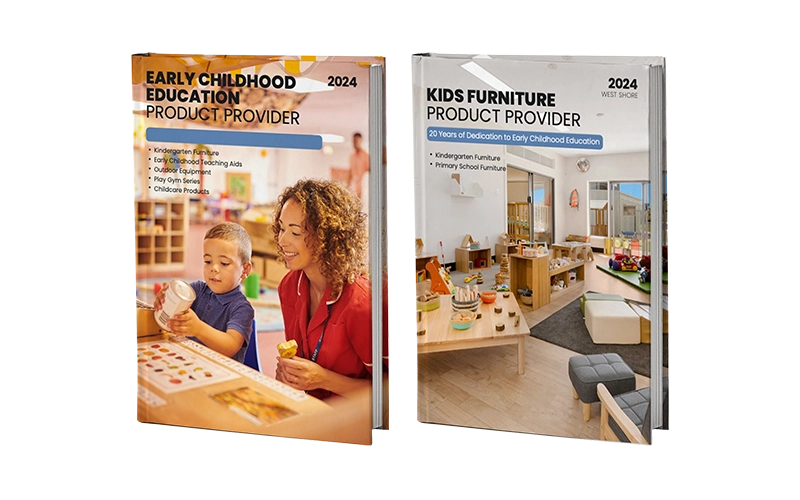
Montessori Pink Tower Activities and Extensions
Once a child becomes familiar with the Montessori pink tower, it opens the door to a variety of engaging activities and extensions that reinforce the original learning objectives while introducing new challenges. These variations support deeper concentration, promote creativity, and prepare the child for later academic concepts such as measurement, volume, and geometry.
1. Tower with a Blindfold
For an advanced sensory challenge, invite the child to wear a blindfold and build the tower using only their sense of touch. This activity heightens tactile discrimination and deepens the child’s awareness of size and weight.
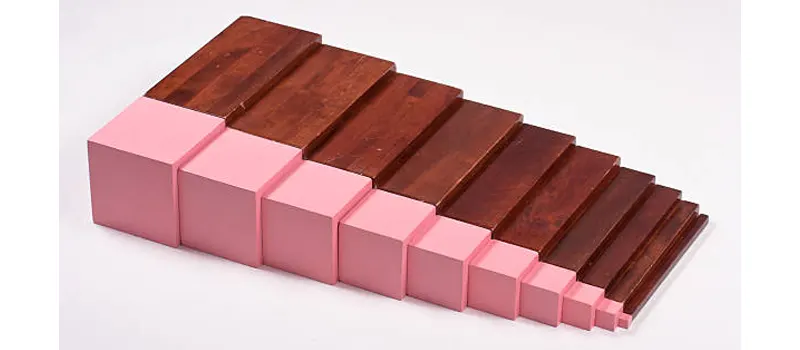
2. Horizontal Line Extension
Instead of building vertically, have the child arrange the cubes in a straight horizontal line on the mat, starting with the largest and ending with the smallest. This helps refine their visual sense of progression and introduces a different way of observing dimension.
3. Matching with the Brown Stair
Combine the Montessori pink tower with the brown stair, another sensorial material. Children can match cubes with prisms of equal height or build creative structures using both sets. This extension strengthens cross-material associations and introduces comparison between different dimensions: height versus width.
4. Measuring and Tracing
Provide paper and pencils for the child to trace around each cube. They can then cut out the shapes and order them by size, reinforcing fine motor skills and early geometry. Older children can begin measuring the sides of each cube and recording the data.
5. Estimation Games
Present two or more cubes at random and ask the child to guess which is larger or smaller before testing their idea by stacking or comparing. This activity promotes critical thinking and decision-making skills in a playful context.
6. Distance Activity
Place the cubes at one end of the room and the mat at the other. The child walks back and forth, carrying one cube at a time to build the tower. This extension supports gross motor development, coordination, and patience.
7. Pattern Card Matching
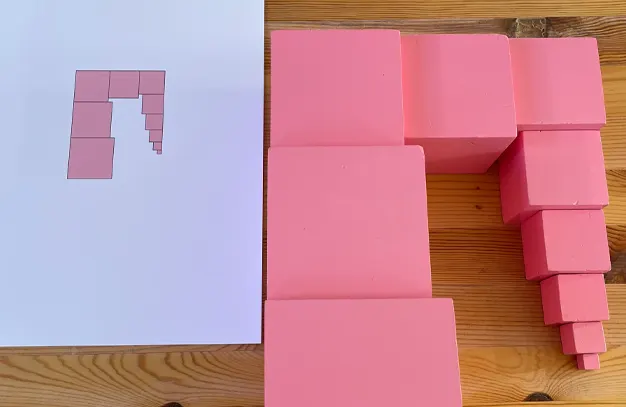
In this activity, the child uses picture cards that show different Montessori Pink Tower arrangements and recreates the patterns on the mat. The cards may include horizontal lines, stair shapes, or alternating sequences. This extension strengthens visual memory and the ability to translate two-dimensional images into three-dimensional structures. The child checks accuracy by comparing the finished work with the card, promoting independence.
How to Choose a Montessori Pink Tower?
Choosing a Montessori Pink Tower requires attention to accuracy, craftsmanship, and alignment with the sensorial purpose of the material. The quality of the cubes directly affects the learning outcome. When selecting a Pink Tower, consider the following key points to ensure the material meets Montessori standards.
Accurate Dimensions
A true Montessori Pink Tower contains ten cubes ranging from one to ten centimeters, each increasing by exactly one centimeter. The precision of these measurements is essential because the purpose of the material is to help the child compare size through sight and touch. Even small errors in dimension reduce the effectiveness of the lesson.
Smooth and Consistent Surfaces
Each cube should be sanded smoothly with uniform edges. Rough surfaces, splinters, or visible joints distract the child from the sensorial experience. Consistency in construction allows the cubes to stack cleanly and supports the child’s control of movement.
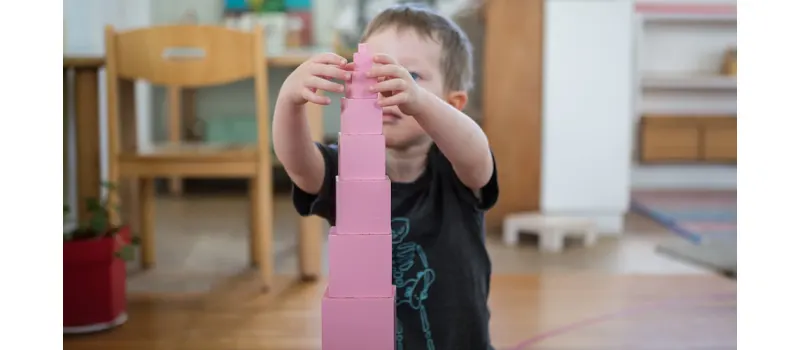
Uniform Color Quality
The surface of each cube should be smooth and painted with a matte, non-glossy finish in a uniform shade of pink. This minimizes light reflection and keeps the child’s focus on size rather than texture or shine. The pink color should be soft and consistent, not overly bright or saturated.
Weight and Durability
The cubes should have enough weight to give the child a real sense of volume without being too heavy to carry safely. Quality wooden cubes maintain their shape over time and withstand frequent classroom use. Avoid overly light or hollow versions, as they reduce the sensory feedback that is central to the material.
High Quality Paint or Coating
Choose a tower finished with child-safe, non-toxic paint or coating. The surface should resist chipping so the cubes remain visually consistent. Damaged surfaces break the isolation of dimension by introducing unintended variables.
Compatibility with Other Sensorial Materials
If you plan to use extensions such as pairing with the Brown Stair, select a Montessori Pink Tower whose proportions match standard Montessori materials. Authentic dimensions support true sensorial comparisons and help maintain the integrity of the curriculum.
Ready to design a space that inspires learning? Connect with us to create customized furniture solutions tailored to your classroom needs.
FAQs
- What skills does the Pink Tower develop besides visual discrimination?
Beyond size comparison, the Pink Tower strengthens concentration, coordination, problem-solving, and the child’s sense of order. These foundational skills support later academic learning and help the child work with greater independence. - Is the Montessori Pink Tower safe for younger children?
The Pink Tower is generally introduced around two and a half to three years old. The cubes are safe when used under supervision, but younger toddlers may not yet have the control needed to handle heavier cubes responsibly. - How often should a child work with the Pink Tower?
Children may return to the Pink Tower many times during the sensitive period for order and coordination. Rather than setting a schedule, teachers observe the child’s interest and allow repetition whenever the child chooses the material naturally. - What if a child mixes up the order and makes mistakes?
Mistakes are part of the learning process. The teacher does not correct the child immediately but allows natural self-correction through observation. Over time, the child notices inconsistencies and refines the work independently. - Can the Pink Tower be used at home?
Yes, the Montessori Pink Tower can be used effectively at home. Parents should demonstrate the activity once with slow, clear movements, then allow the child to explore freely without interference. - How do you clean or maintain a Montessori Pink Tower?
Wipe cubes regularly with a soft, slightly damp cloth and dry them immediately. Avoid harsh cleaning products that damage the paint. Proper care keeps the material visually consistent and maintains the isolation of dimensions. - Why do some towers look darker or lighter in color?
Different manufacturers may use slightly different pink tones, but the key requirement is uniformity within the set. As long as all cubes share the same color, the sensorial purpose remains intact. - Why does the Montessori Pink Tower have ten cubes and not more or fewer?
The ten cubes create a precise progression in dimension and visually represent systematic gradation. This structure prepares the child for early mathematical thinking, particularly the concept of sequencing and the decimal system.
Conclusion
The Montessori Pink Tower remains one of the most iconic sensorial materials because it offers children a clear, hands-on way to understand dimension, order, and comparison. Through careful presentation and thoughtful extensions, children build concentration, coordination, and early mathematical thinking while developing confidence in their ability to explore and self-correct.
Whether used in its traditional vertical form or expanded through pattern cards, Brown Stair combinations, or distance activities, the Pink Tower supports deep, meaningful learning rooted in observation and independent discovery. By choosing a high-quality tower and presenting it with intention, educators create an environment where children can engage with beauty, precision, and purposeful work, all essential qualities of the Montessori approach.





